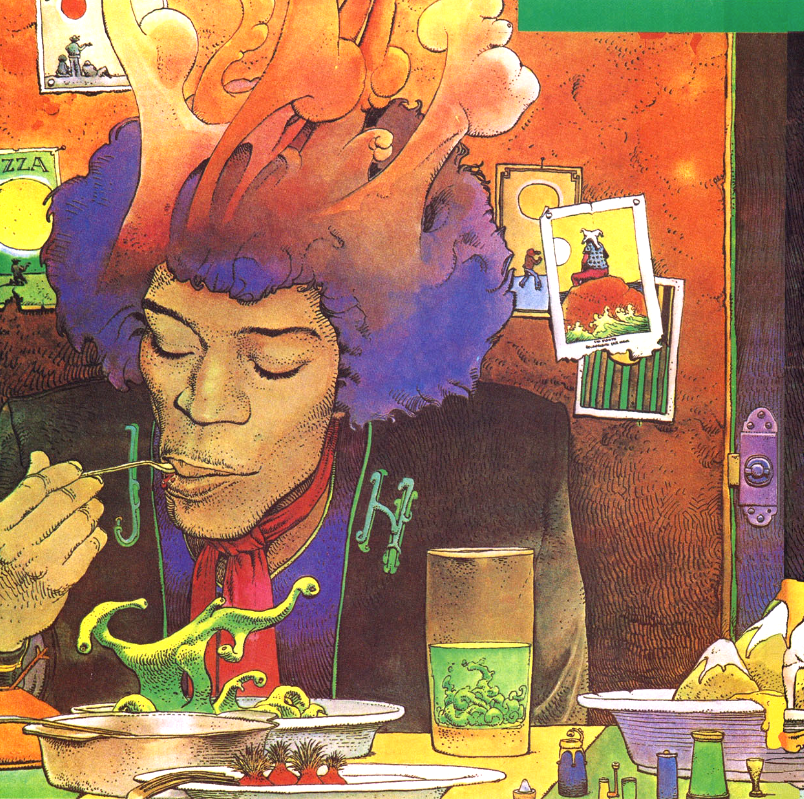
The 1995 release of posthumous Jimi Hendrix compilation Voodoo Soup has divided fans and critics for over two decades now. But whatever its merits, its cover art should hold an honored place in every Hendrix fan’s collection. Drawn by the legendary cult comic artist Moebius from a photograph of Hendrix eating soup in France, it captures the sound Hendrix was moving toward at the end of his life—his head exploding in flames, or mushroom clouds, or pink psychedelic bronchial tubes, or whatever. The image comes from a larger gatefold, excerpted below, which Moebius drew for the French double LP Are You Experienced/Axis: Bold as Love in 1975.
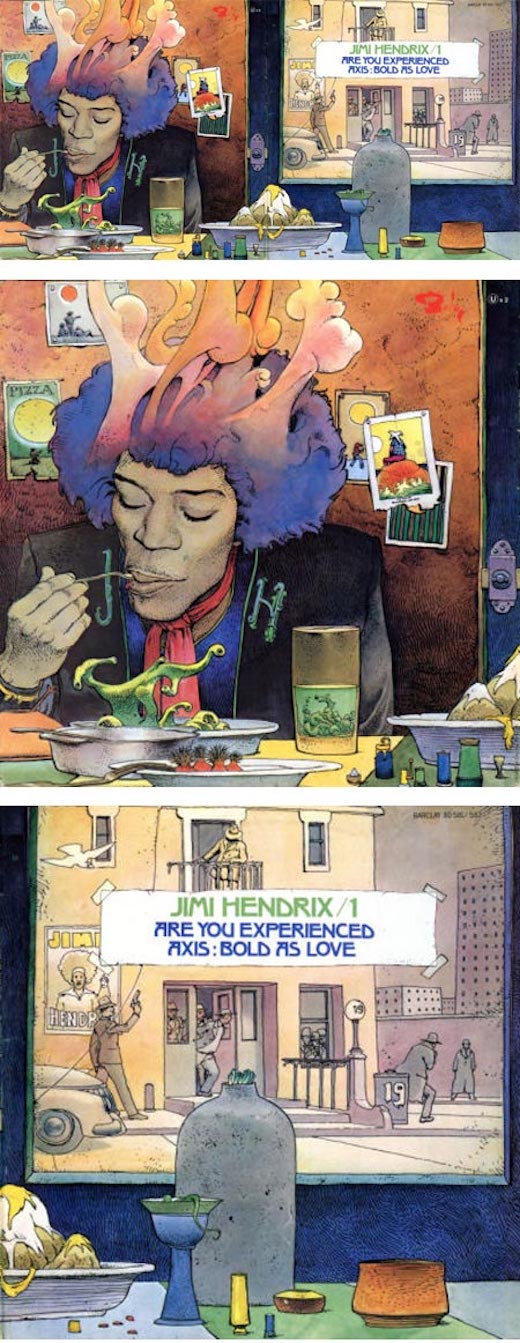
Journalist Jean-Nöel Coghe was supposedly very upset that he did not even receive mention for taking the original photo, but in the nineties he and Moebius came together again for a project that would do them both credit, a book called Emotions électriques that Coghe wrote of his experiences traveling through France as Hendrix’s guide during the Experience’s first tour of the country in 1967.
Moebius provided the book’s illustrations, many of which you can see below, “each of them,” as the publisher’s description has it, “imagining Hendrix in a classic Moebius landscape of dreams.”
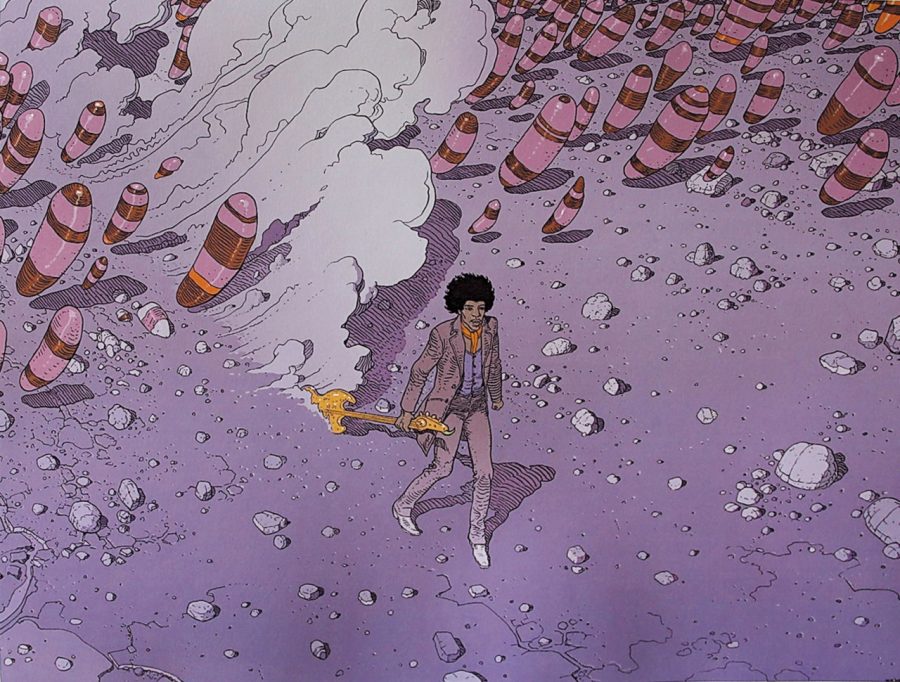
Obviously a huge Hendrix fan, Moebius is in many ways as responsible for the psychedelic space race of the 1970s as the guitarist himself. His work in the French comic magazine Métal hurlant—Heavy Metal in the American version—epitomized the sci-fi and fantasy elements that came to dominate heavy rock. His work with Alejandro Jodorowsky on the Chilean visionary filmmaker’s aborted Dune is the stuff of legend.
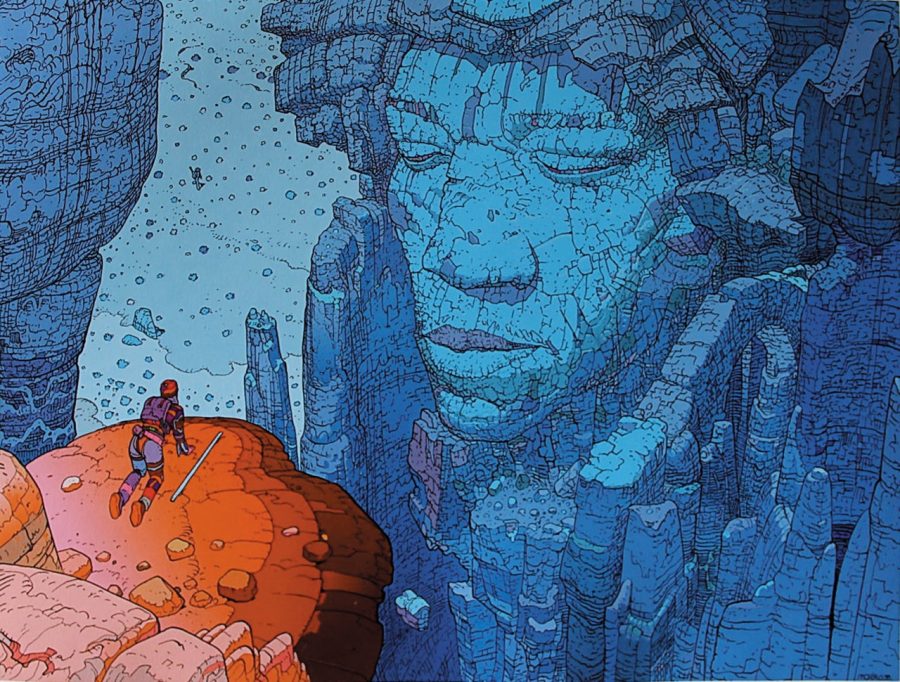
Moebius had illustrated album covers since the early seventies, mostly those of European artists. But his creations as a magazine and comics illustrator (and film scenarist) have the most enduring appeal for much the same reason as Hendrix’s music. They are both unparalleled masters and natural storytellers whose imagined worlds are so richly detailed and consistently surprising they have birthed entire genres. The two may have crossed paths too late to actually work together, but I like to think Moebius carried on the spirit of Hendrix in a visual form.

It may not be common knowledge that Hendrix hated his album covers, leaving detailed notes about them for his record company, who ignored them. His own choices, one must admit, including a Linda McCartney photo for the cover of Electric Ladyland that makes the band look like they’re on the set of a proto-Sesame Street, do not exactly sell the records’ treasures. But Jimi might have loved Moebius’ interpretations of his headspace, a visual continuation of a prominent strand of Hendrix’s imagination. See all of Moebius’ Hendrix illustrations here.
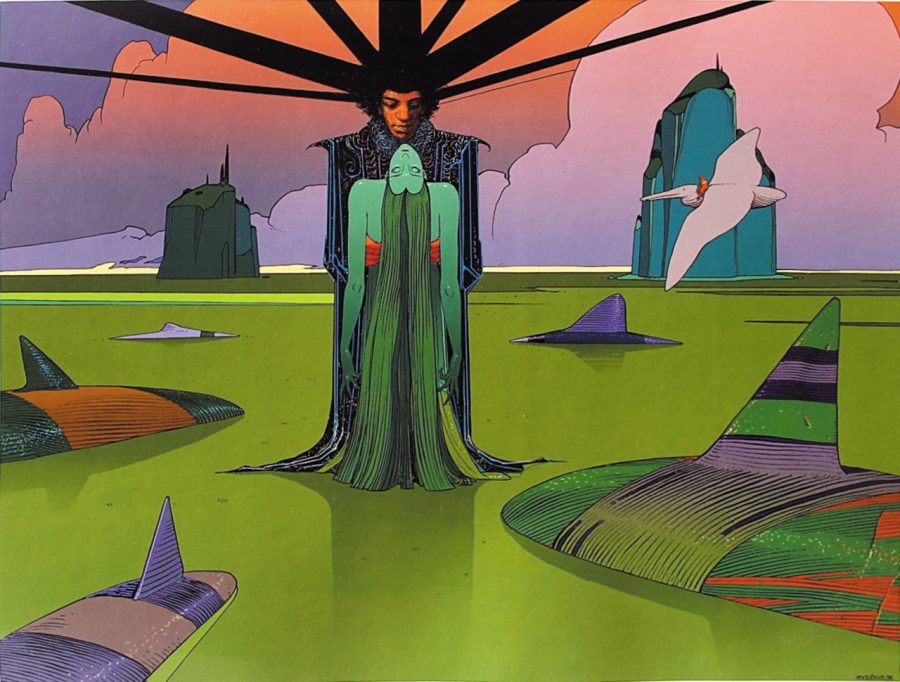

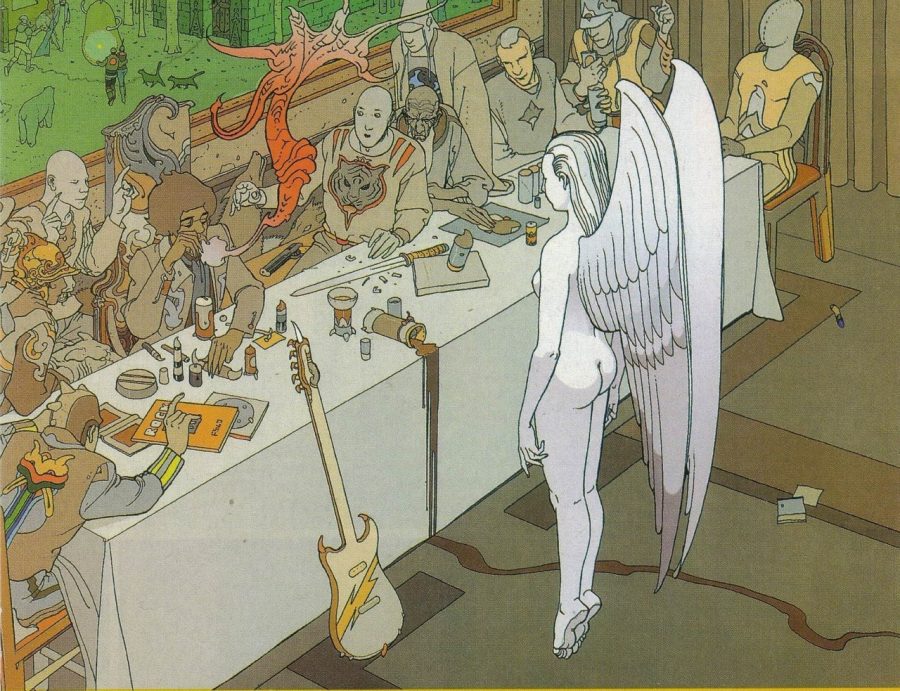
Related Content:
Jimi Hendrix’s Final Interview Animated (1970)
Josh Jones is a writer and musician based in Durham, NC. Follow him at @jdmagness


Thank you for sharing this! Both Hendrix and Moebius were ground breaking and influential artists and metaphysicians. I never met Jimi, but I did some a fair amount of time with the Moeb. Love this collaboration.
The real story is a bit more strange and perverse. The Hendrix photographer, Jean-Noël Coghes, a Frenchman got the idea to sue Moebius in the 1990s for basing his cover painting on a photograph he’d taken. The now defunct French record company that had given Moebius the photo to use as reference never worried about copyright issues. Moebius was terrified at the idea of facing a lawsuit but his friend Alejandro Jodorowsky surmised that the photographer was probably suffering from a lack of career recognition and proposed to broker a truce: Moebius would do a gallery show with him if he agreed to drop the suit. Thus is was that Moebius got roped into doing a series of Hendrix drawings based on other photos taken by the “plaintiff”.
Moebius never actually owned any Hendrix albums nor did he listen to him and he CERTAINLY wasn’t a “fan” — he only listened to Pop, Bebop Jazz, and afro cuban groove — but he had to do this to save his skin. He dreaded the idea of doing this series of drawings and people familiar with his body of work will pick up on the gloom that emanates from them as well as the economical and expedient technique he used to get through them. On the way to the gallery opening, he said “I hope they don’t write on my grave that I was the official Hendrix artist”…
Jimi eats his soup in Brussels. Not France.
He sits with Jean Noël Coghe in a restaurant near Grand Place.
Keep up the good work.
Sir;
Being a SERIOUS fan of Moebius, I’ve GOT to ask:
Are these Hendrix illustrations collected ANYWHERE???? Where did YOU find them? Are they in ANY Moebius collection???
Thank you;
TMN
@Tony Max Nance
Yes, there is a book (in French) : Moebius, Jean Noël Coghe “Jimi Hendrix — Emotions électriques” Sofcover. Le Castor Astral(ed.) 1999, 128 pages. With sketches, photographs, memorabilia and about 10 illustrations by Moebius. Plus jimi’s bio and the story behind the book (lawsuit, etc.).